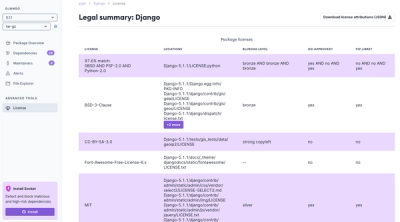
Product
Introducing License Enforcement in Socket
Ensure open-source compliance with Socket’s License Enforcement Beta. Set up your License Policy and secure your software!
three-dxf-viewer
Advanced tools
DXF viewer made using dxf parser and threejs. It generates a threejs object that can be used in any scene. It also has some utility classes:
You can try it here
npm install three-dxf-viewer
To use it just initialize the main class and launch getFromFile or getFromPath methods.
import { DXFViewer } from 'three-dxf-viewer';
// Suppose we have a font in our application
let font = 'fonts/helvetiker_regular.typeface.json';
// Suppose we have a file input and a loading div
var file = event.target.files[0];
// Get all the geometry generated by the viewer
let dxf = await new DXFViewer().getFromFile( file, font );
// Add the geometry to the scene
scene.addDXF( dxf );
More examples can be found in the example folder on github.
There are 4 utilities that can be used optionally with the viewer:
By default the viewer will merge Block entities. however, it is possible to merge all entities to optimize drawing big DXF files.
import { Merger, DXFViewer } from 'three-dxf-viewer';
let dxf = await new DXFViewer().getFromPath( dxfFilePath, fontPath );
const mergedObject = new Merger().merge( dxf );
scene.add( mergedObject );
The select class can be used to select entities in the scene. It will highlight the selected entity. Selection can be done by clicking on the entity or pressing Ctrl and using the selection box.
import { Select, DXFViewer } from 'three-dxf-viewer';
let dxf = await new DXFViewer().getFromPath( dxfFilePath, fontPath );
const select = new Select( three.renderer.domElement, three.camera, dxf );
select.subscribe( 'select', ( selects ) => console.log( 'Selected entities', selects ) );
scene.add( dxf );
The hover class will highlight the hovered entity by the mouse.
import { Hover, DXFViewer } from 'three-dxf-viewer';
let dxf = await new DXFViewer().getFromPath( dxfFilePath, fontPath );
const hover = new Hover( three.renderer.domElement, three.camera, dxf );
hover.subscribe( 'hover', ( hovered ) => console.log( 'Hovered entity', hovered ) );
scene.add( dxf );
Snaps classes can store all the vertices in an efficient way. This allows to get the closest vertex to a point in the scene. This is useful for example to snap to the nearest vertex when drawing lines.
import { SnapsHelper } from 'three-dxf-viewer';
let dxf = await new DXFViewer().getFromPath( dxfFilePath, fontPath );
let snaps = new SnapsHelper( dxf, renderer, scene, camera, controls );
For a more detailed explanation, there is an example folder on how to use the viewer. Download it from github an launch it with:
npm install
npm run dev
The application will be available on http://localhost:9009
FAQs
DXF viewer using ThreeJS
The npm package three-dxf-viewer receives a total of 72 weekly downloads. As such, three-dxf-viewer popularity was classified as not popular.
We found that three-dxf-viewer demonstrated a healthy version release cadence and project activity because the last version was released less than a year ago. It has 0 open source maintainers collaborating on the project.
Did you know?

Socket for GitHub automatically highlights issues in each pull request and monitors the health of all your open source dependencies. Discover the contents of your packages and block harmful activity before you install or update your dependencies.

Product
Ensure open-source compliance with Socket’s License Enforcement Beta. Set up your License Policy and secure your software!

Product
We're launching a new set of license analysis and compliance features for analyzing, managing, and complying with licenses across a range of supported languages and ecosystems.

Product
We're excited to introduce Socket Optimize, a powerful CLI command to secure open source dependencies with tested, optimized package overrides.